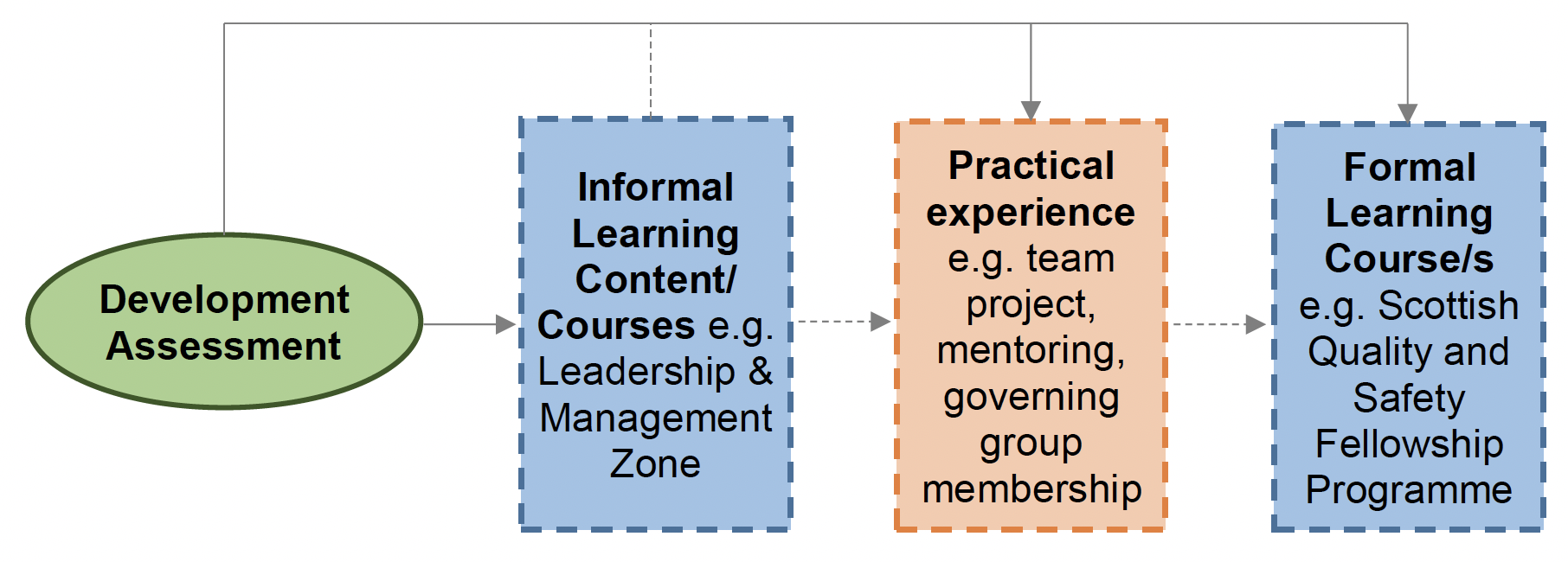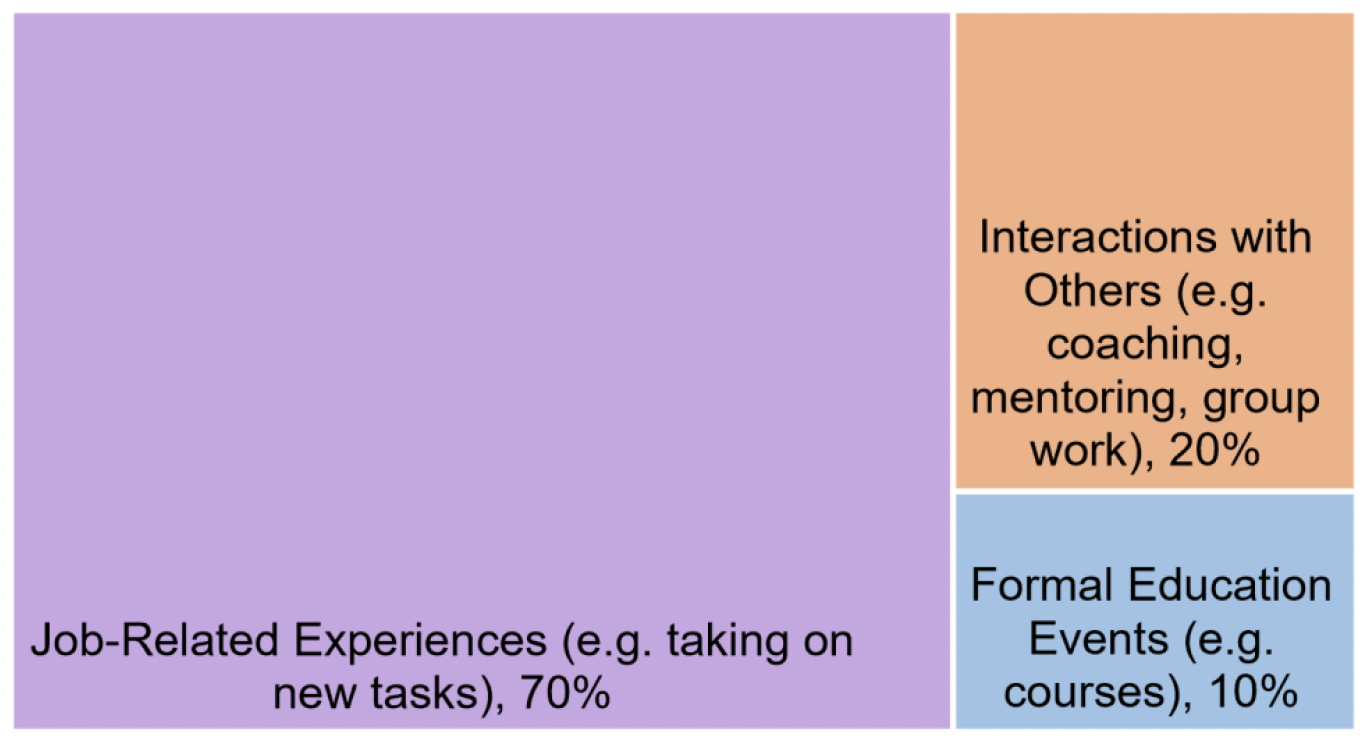Cancer workforce: clinical leadership guidance
Information for cancer service colleagues across NHS Scotland on opportunities for developing clinical leadership skills. The guidance highlights tools to help identify leadership development needs and how to progress these at all career stages.
3. Planning Your Leadership Development Journey
The diagram below demonstrates the variety of routes an individual's learning pathway can take. It is by no means exhaustive but illustrative of the types of leadership development opportunities that are available. Key takeaways are as follows:
- The 'assessment' stage is the key initial step whereby individual learning needs are assessed and a tailored learning pathway can be curated. In section 4 we have identified various self-assessment tools which can be used.
- Some may progress directly to a formal learning course. However, this is likely to encompass a minority of individuals, either because of the limited number of places and highly competitive application process or because other options are more suitable.
- There is a wealth of other leadership development opportunities available. The diagram illustrates some of these including:
- Less formal self-directed online content/ courses (such as that available through the Leadership Management Zone, Project Lift and QI Zone)
- Opportunities to gain practical experience via options such as team project working (see Appendix A for case study on this approach in practice at University Hospital Crosshouse ICU department); mentoring (such as those available through the Leadership Management Zone); or becoming a member of a governing or working group at local, regional or national level.
- Any step along the learning pathway can be taken directly after the diagnosis stage. Each step could also be part of a sequential learning journey, could be undertaken individually or simultaneously. There is no one-size-fits-all approach and no prescribed learning journey.

The remainder of this guidance document primarily relates to the development assessment stage and the range of formal and informal courses and content available in the area of leadership development. Practical experience is often a feature of formal courses but, as indicated in the diagram above, can also be gained separately through job-related experiences. The value of this cannot be understated as advocated in the widely acknowledged 70: 20: 10 model of personal development.

Designed to support a continual process of performance enhancement, this model is based on a blended approach to learning whereby 70% of learning is through job-related experiences, 20% is through interactions with others and 10% is through formal education events. It is recommended that colleagues bear this in mind when considering their individual leadership development journey.
Contact
Email: CancerPolicyTeam@gov.scot
There is a problem
Thanks for your feedback